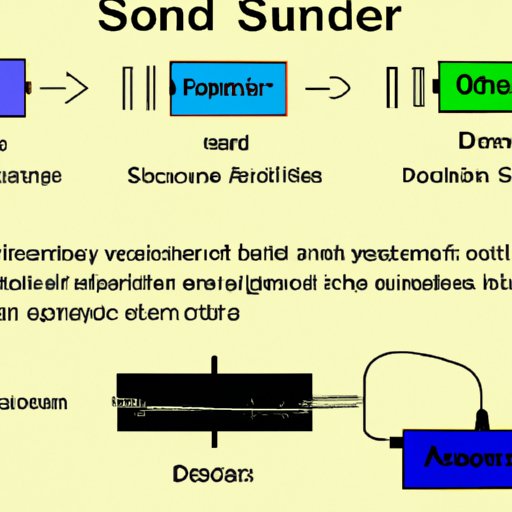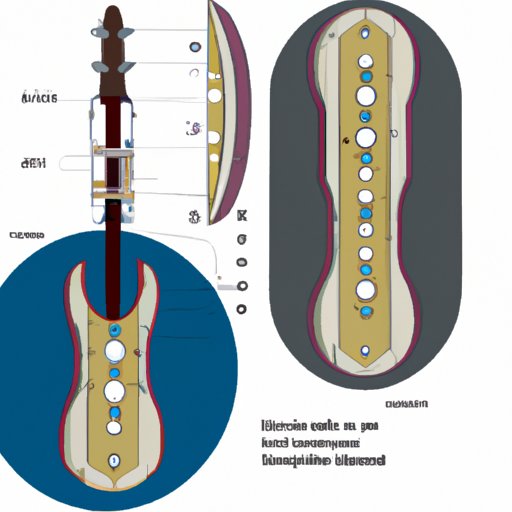Introduction
A guitar is a stringed musical instrument played with the fingers or a pick. It is an incredibly versatile instrument, used in almost all genres of music. Guitars come in two main varieties: electric and acoustic. Although each type of guitar operates differently, they share many components and principles that make them both unique.
Anatomy of a Guitar
Guitars are made up of several different parts. Structural components such as the neck, headstock, fretboard, body, and strings are common to both electric and acoustic guitars. Electric guitars also have additional components such as pickups, tone controls, and amplifiers.
How Electric Guitars Work
Electric guitars use pickups to capture the vibrations of the strings and amplify them. Pickups are magnets wrapped in copper wire that convert the vibrations into electrical signals. These signals are then sent through the tone control knobs and out to the amplifier, which increases the volume of the signal.
How Acoustic Guitars Work
Acoustic guitars do not require electricity to produce sound. The sound is created by the vibration of the strings, which is amplified by the hollow body of the guitar. The soundboard on the top of the guitar helps to project the sound outwards. The bridge transfers the vibrations from the strings to the soundboard, while the strings themselves vibrate to create the desired note.

Role of Different Components in Creating Sound
The resonance of the body of the guitar plays an important role in creating sound. When the strings are plucked, they vibrate and create soundwaves. These soundwaves are then amplified by the body of the guitar, producing a louder sound. The shape and size of the body also affects the tone of the sound.
Physics of a Guitar’s Structure and Sound Production
The physics of sound production is complex, but essentially boils down to acoustics. Acoustics is the science of sound waves and their properties. As the strings vibrate, they create waveforms that travel through the air. These waveforms can be affected by factors such as interference, reflections, and dampening.
History of Guitar Manufacturing and Design
Guitar manufacturing and design has changed dramatically over the centuries. Early instruments were much simpler than modern guitars, and were usually made from wood or animal skin. Over time, guitars have become more sophisticated, with the introduction of new materials, technology, and techniques. This has had a major impact on the sound production of guitars.
Conclusion
Guitars are incredibly complex instruments, with many different components and principles at work. The structure and physics of a guitar play a large role in how it produces sound. The history of guitar manufacturing and design has also had a significant impact on the sound production of modern instruments. By understanding the anatomy and physics of a guitar, we can better appreciate its unique and beautiful sound.
(Note: Is this article not meeting your expectations? Do you have knowledge or insights to share? Unlock new opportunities and expand your reach by joining our authors team. Click Registration to join us and share your expertise with our readers.)
